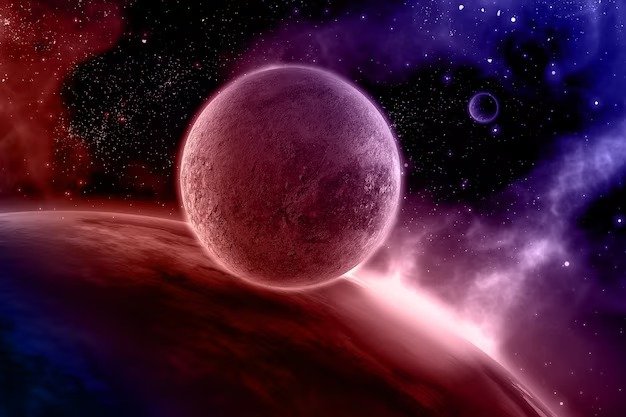Introduction
In the cosmic ballet that is our solar system, Jupiter takes center stage, surrounded by a mesmerizing entourage of moons. Among these, the Galilean moons—Io, Europa, Ganymede, and Callisto—stand out as celestial companions, each contributing its unique notes to the symphony of Jupiter’s gravitational influence. This exploration delves into the individual tales of these moons, unraveling their geological wonders, potential for life, and the orchestration of a grand cosmic symphony.
The Volcanic Virtuoso
A World of Fire and Fury
At the forefront of the Galilean ensemble is Io, a moon that defies expectations with its intense volcanic activity. Explore the geologic wonders of Io, from towering plumes to vast lava flows, and uncover the forces driving this volcanic virtuoso. Io’s dynamic landscape offers insights into the tidal interactions with Jupiter that orchestrate its volcanic performances.
Tidal Forces and Volcanic Ballet
Delve into the intricate dance between Io and Jupiter’s immense gravitational forces. Understand how tidal interactions induce tremendous internal heat, creating a dynamic volcanic ballet on Io’s surface. Explore the implications of this celestial choreography for our understanding of planetary dynamics and the potential for subsurface oceans.
Europa A Moon of Enigmatic Oceans

The Icy Enigma
Europa, with its smooth icy surface, hints at a world beneath the ice—an enigmatic subsurface ocean. Investigate the evidence pointing towards Europa’s hidden oceans and the potential implications for habitability. Explore the scientific quests to unveil the mysteries of Europa’s hidden realm and the tantalizing prospects for extraterrestrial life.
The Dance of Tidal Forces
Unravel the gravitational dance between Europa, Jupiter, and the neighboring moons. Tidal forces play a crucial role in maintaining Europa’s subsurface ocean, creating a delicate celestial dance. Examine the scientific endeavors, including proposed missions, aimed at exploring Europa’s icy surface and probing the mysteries of its hidden ocean.
Ganymede Icy Plains and Magnetic Mysteries
3.1 The Largest Moon in the Solar System
Ganymede, the largest moon in our solar system, boasts icy plains and a complex geological history. Explore the unique features of Ganymede’s surface and the mysteries hidden beneath its icy exterior. Consider the implications of Ganymede’s size and composition for our understanding of planetary formation and evolution.
Ganymede’s Magnetic Symphony
Delve into Ganymede’s magnetic field, a feature that distinguishes it from other moons. Investigate the origins of Ganymede’s magnetic symphony and the interactions with Jupiter’s powerful magnetic field. Examine the data collected by space missions, shedding light on Ganymede’s internal dynamics and contributing to the broader understanding of magnetic fields in celestial bodies.
Callisto Ancient and Unchanged
The Time Capsule Moon
Callisto, a moon marked by ancient cratered terrains, serves as a cosmic time capsule. Explore the surface of Callisto, revealing a history written in its craters and geological features. Understand the implications of Callisto’s seemingly unchanged appearance for our understanding of the solar system’s evolution over billions of years.
Callisto’s Role in the Symphony
Consider Callisto’s role in the cosmic symphony orchestrated by Jupiter. With its stable and unchanging surface, Callisto contributes a unique perspective on the interactions within the Jovian system. Explore the scientific inquiries into Callisto’s geology and its significance in understanding the broader dynamics of the Galilean moons.
The Cosmic Harmony Interplay and Influences
Tidal Resonances A Celestial Sonata
Examine the tidal resonances that link the Galilean moons, creating a celestial sonata orchestrated by Jupiter’s gravitational pull. Explore the interconnected dance of these moons, influencing each other’s orbits and maintaining a delicate balance within the Jovian system. Consider the implications of this cosmic harmony for planetary dynamics and our broader understanding of celestial mechanics.
Jupiter’s Role as Maestro
Reflect on Jupiter’s role as the maestro of this cosmic symphony, conducting the movements of its Galilean moons. Consider the profound influence of Jupiter’s gravity, creating tidal forces that drive geological activity and shape the surfaces of these moons. Delve into the interconnected nature of the Jovian system, where each moon contributes to the overall harmony under Jupiter’s celestial baton.
Future Overtures Exploration and Discoveries
Exploration Missions
Look toward the future of exploration as missions are planned to unveil more secrets of the Galilean moons. Explore the objectives of upcoming missions and the innovative technologies designed to study these moons up close. Consider the potential for groundbreaking discoveries that may reshape our understanding of these celestial companions.
The Quest for Extraterrestrial Life
Contemplate the quest for extraterrestrial life within our solar system. Investigate the potential habitability of Europa’s subsurface ocean and the implications for the search for life beyond Earth. Reflect on the ethical considerations and challenges associated with exploring environments that may harbor extraterrestrial life.
Conclusion
As we conclude our journey through the symphony of Jupiter’s Galilean moons, we marvel at the richness and diversity of these celestial companions. From the fiery eruptions of Io to the hidden oceans of Europa, the icy plains of Ganymede, and the ancient landscapes of Callisto, each moon adds its unique melody to the cosmic harmony.
Jupiter, the grand maestro, conducts a celestial symphony that transcends the boundaries of our understanding. The gravitational interplay, tidal forces, and geological dynamics form a harmonious legacy within the Jovian system. The Galilean moons, with their individual tales, stand as testament to the intricate dance of celestial bodies in our solar system.
As we continue to explore and unravel the mysteries of these moons, we embark on a journey that expands our comprehension of planetary science and the potential for life beyond Earth. The Galilean moons, with their symphony of celestial companionship, inspire awe and ignite our curiosity about the cosmic wonders that unfold in the vastness of our solar system.

